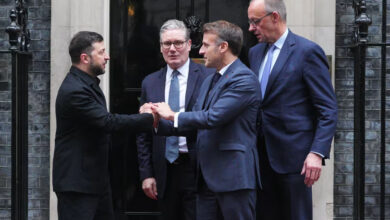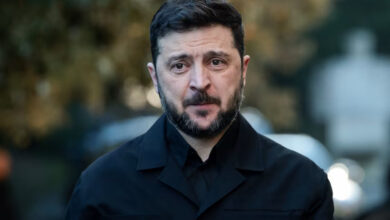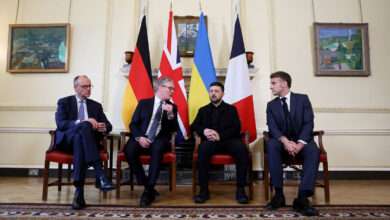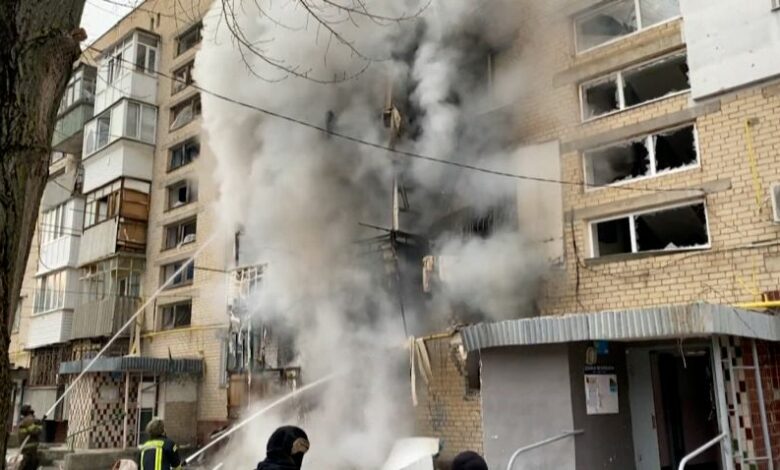
Gone are the acres of jubilant crowds that filled Freedom Square with blue and yellow Ukrainian flags that swayed like heads of wheat when the Russians were driven out. Now the crack-crunch of Russian artillery eating into the city echoes around the plaza.
The harvest of victory in the fall has been a bitter winter.
In the previous 48 hours, Kherson had endured more than 130 strikes by rockets, artillery, mortars and even direct tank fire across the Dnieper River from Russian forces. Four people were killed in the same period, another dozen or more wounded.
Several warehouses were also set ablaze. One of them stored fireworks – bizarre goods to store amid shelling. But also a symbol of hope, in the face of bloody experience, that there may be something more to celebrate, sometime.
The regional capital was captured last March in the early stages off Russia’s invasion. Many of its 290,000 citizens left then. More appear to have fled since it was liberated in November. Ukraine’s administration implored them to leave since then to escape the Russian shelling.
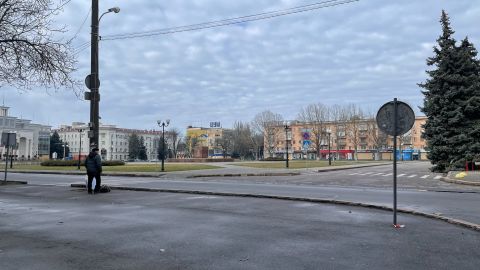
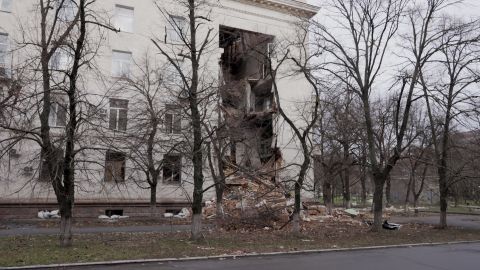
Young mothers, pensioners and a handful of drunks scuttle and stagger as fast as they can across Freedom Square to catch buses. Time above ground, just a few hundreds meters from the river, is time spent in mortal danger – especially here.
A fews days earlier a chunk of the city hall was torn out like a slice of cake by a Russian missile. It left part of the local administration building crumbled in the street.
Overhead Ukrainian jets roar through the low clouds – at least, everyone tells themselves “they’re Ukrainian.”
The bridges to the Russian-held side, where the Kremlin’s invaders still control 60% of the province, have all been blown up.
At night reconnaissance units from both sides probe their enemies’ positions – or hunt down command centers. A Ukrainian officer, who goes by the call sign “Sneaky,” said his men, who included a numbers of American and British volunteers, had “killed 16 Russians” on a patrol a couple of days earlier.
“We hit them with drones and our own weapons. They were all killed quickly, except one,” Sneaky told CNN.
“He was wounded and was going to die when we caught him. We spoke to him and gave him some water and his last cigarette. Then … well, he died,” he added.
Ukraine’s front with Russia is at least 1,300 km (810 miles) long. It’s moved back and forth as small villages have been suffering a Russian onslaught in the east of the country. There is talk now, from Ukrainian officials, that Russia is planning a major assault in the next few weeks.
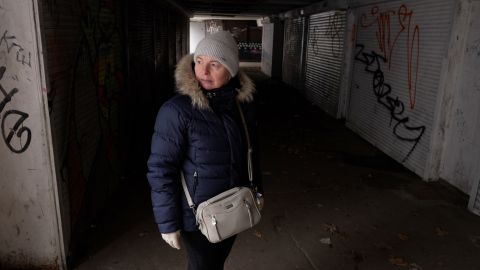
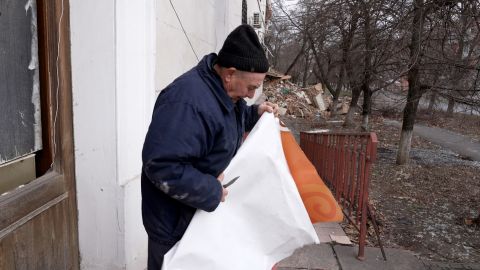
It may not come in Kherson, where the river’s a formidable barrier to ground attacks in either direction. So, for now, the Russians slam the city day and night with hammer blows delivered apparently at random.
Tatiana was in an underpass beneath the main drag along one side of Freedom Square on her way to catch a bus. She’d moved back to the city because she couldn’t afford to live anywhere else.
“I came back because where I was living I ran out of work. And I couldn’t pay my rent anymore. And I came back home because it’s my home.
The Russians were bombarding the town, she said, “For revenge. Probably revenge, because they ran away.”
The revenge was so intense at the time she was speaking that emergency crews of firefighters and medics spoke to CNN from a bunker in a secret location. They said the shelling was too intense to launch any missions to help. Their location is secret to prevent the Russians targeting them.
Hitting Kherson like this isn’t totally senseless. Russia’s brutal logic is that targeting civilians will eat away at Ukrainian morale. That a daily diet of this kind of misery will weaken Kyiv’s resolve, and even the resolve among her allies to help Ukraine sustain a long war.
A Russian offensive on the ground is more likely to come along the front running east to west to the city of Zaporizhzhia, or in the Donbas. But Ukraine must also protect recently liberated areas in Kherson or risk a Russian return – and that absorbs troops.
Compared to Ukraine, Russia has troops to spare. It’s been throwing them into the “meat grinder” battle for Bakhmut in the east.
Ukraine says it urgently needs weapons that will offset Russia’s quantitative strategic edge – like long range missiles and fighter-bomber jets. Time’s on the Kremlin’s side.
“Long-range weapons will change the course of the war. We are sure of our victory, but then the victory will be faster,” Ukrainian President Volodomyr Zelensky said Friday.
Anatoly is a pensioner from the Antonivka neighborhood of Kherson. The area has river views. It’s near the main bridge across the Dnieper. And it’s an easy target for Russian forces.
He’s come to find something to cover up his windows that have been blown out by shelling. He finds plastic sheeting over a broken window where the city hall has been holed and cuts it away with a pocket knife. Artillery and rockets thump in the background.
Enduring Russian (and Soviet) invasions and atrocities is in Kherson’s DNA. It was an early prize in Russian Empress Catherine the Great’s 18th century conquest of the region.
Her adviser in this colonial expansion, Prince Grigory Potemkin was interred in Kherson’s St. Catherine’s Cathedral. When the Russians were driven back last year, they took his bones with them. If that symbol of Russian imperial designs on Kherson were truly never to return to the city, no doubt the parties would come back to Freedom Square.
CNN’s Sarah Dean, Olha Konovalova and William Bonnett contributed to this report.

